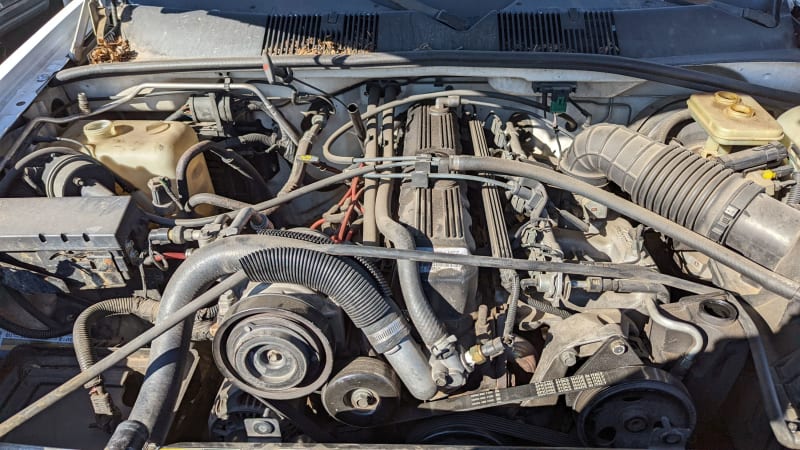Junkyard Gem: 1993 Jeep Grand Cherokee
Jeep, then part of the American Motors Corporation, introduced the unibody XJ Cherokee for the 1984 model year, and suddenly there was a tough-looking truck that drove like a car and got much better fuel economy than the rest of the truck world. Ford responded with the Explorer SUV for 1991, and suddenly commuter trucks were everywhere. Even before Chrysler bought AMC in 1987, a snazzier successor to the Cherokee was being cooked up in Kenosha; it debuted in the 1993 model year and was an instant sales success. Here’s one of those first-year Grand Cherokees, found in a Colorado wrecking yard last fall.

The Grand Cherokee had a wheelbase four inches longer than that of the XJ Cherokee (which, though a bit cramped by later SUV standards, was so beloved that production continued into our current century), and the ’93 scaled in at 3,547 pounds versus 2,850 pounds for the ’93 four-door 4×4 XJ. 30 years later, Stellantis is now building the fifth generation of the Grand Cherokee.

Lee Iacocca didn’t have Chrysler buy American Motors because he wanted to build Renault Alliances or AMC Concords. No, what he really wanted was the Jeep brand and especially the design that became this truck (Chrysler also scored big in that deal by getting the Eagle Premier, which included the Renault-derived suspension design that went under the big-selling Chrysler LH cars of the 1990s and 2000s, as well as the design of the AMC engine that became the PowerTech 4.7 V8).
The Grand Cherokee’s debut at the 1992 Detroit Auto Show, in which Bob Lutz drove it up Cobo Hall’s front steps and through a big plate-glass window, made a strong impression.

In 1993, the Ford Explorer had but a single engine available: a 4.0-liter pushrod six-cylinder with ancestry stretching all the way back to the middle 1960s. Its new Jeep rival had a 4.0-liter pushrod six-cylinder with ancestry stretching all the way back to the middle 1960s as well, though Chrysler’s good old 318-cubic-inch (5.2-liter) V8 was available as an option.

This straight-six engine was rated at 190 horsepower and 225 pound-feet; the Explorer’s Cologne V6 made 145 horses and 220 pound-feet that year. If you go back the the 1970s, the ancestors of those two engines were powering AMC Gremlins and Ford Capris, respectively. If you go back another decade, they were found under the hoods of Rambler Classics and Taunus 20Ms. This sort of history is what makes these vehicles Junkyard Gems.

An Aisin-made five-speed manual transmission was base equipment in the 1993 Grand Cherokee, but nearly every buyer got the four-speed Chrysler Torqueflite automatic. The manual was available through 1994, then discontinued for the American market (those clutch-loving Europeans could still get the five-on-the-floor in their Grand Cherokees for a while after that). A two-wheel-drive version was available, but this truck has Quadra-Trac four-wheel-drive.

If this truck had retired 330.3 miles earlier, it could have ended its days with 222,222.2 miles showing on the odometer.

A driver’s-side airbag was standard equipment in the 1993 Grand Cherokee, a first for any SUV. Starting in late 1998, every new car and light truck sold in the United States was required to have front airbags for both driver and passenger.

The success of the Explorer and Grand Cherokee during the first half of the 1990s made it clear that every vehicle manufacturer would need to sell comfortable, suburbia-optimized trucks or face cruel sales consequences in the very near future. This shift in American motoring tastes and the hurried response to it resulted in oddities such as Honda- and Acura-badged Isuzu SUVs hitting showrooms later in the decade.
It was just an enlarged and slightly rounded XJ Cherokee, but it was perfect for the triumphal mood of Americans in the years right after the end of the Cold War.
Most Grand Cherokee owners never drive off-road, but then most Corvette owners never set tire to race track. You could, and that’s what’s important.







